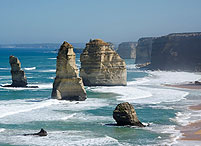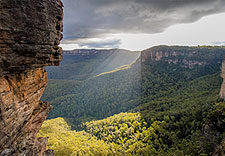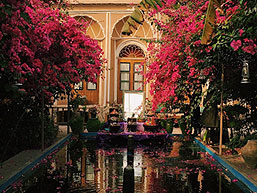- Translators
- Translation Services
- Testimonials
- FAQ
- Contact Us
Mongolian Translator
For Blayney
Whether you're looking for Mongolian to English translation or English to Mongolian translation, our certified and professional Mongolian translator is ready to help you. Professional Mongolian translation services for residents of Blayney are prepared by full-time translators, experienced in translating for both individuals and businesses.
Translation
Checked x2
Checked x2
2000+ Translators
Pro and Full Time
Pro and Full Time
Secure SSL Encryption Payments by Stripe
NAATI Certified Mongolian Translator
If you require certified or official translations for migration or legal purposes from a registered translation company, our NAATI certified translators are here to help. Get in touch with your translation requirements today.
Mongolian Translations for Blayney
 Get fast and reliable NAATI Mongolian translator for the translation of all types of personal documents. Our professional translators can also assist with marketing translation, medical translation and complex technical translations.
Get fast and reliable NAATI Mongolian translator for the translation of all types of personal documents. Our professional translators can also assist with marketing translation, medical translation and complex technical translations.
- Mongolian certificate translation Blayney
- Mongolian document translation Blayney
- Mongolian driver licence translation Blayney
- Mongolian marriage certificate translation
- Mongolian birth certificate translation
- Mongolian marriage certificate translation
- Mongolian divorce certificate translation
- Mongolian death certificate translation
- Mongolian bank statements translation
- Mongolian payslip or salary translation
- Mongolian passport translation
- Mongolian degree or diploma translation
- Mongolian academic transcript translation
- Mongolian police report translation
- Mongolian utility bill translations
- Mongolian wills and probate translations
NAATI Translators for all Locations
 Get NAATI translation services wherever you're based in Australia. All NAATI translators have up-to-date credentials with NAATI for providing certified document translations in Australia.
Get NAATI translation services wherever you're based in Australia. All NAATI translators have up-to-date credentials with NAATI for providing certified document translations in Australia.
- Mongolian translator Sydney
- Mongolian translator Melbourne
- Brisbane translation services
- Perth translation services
- Adelaide translation services
- Canberra translation services
- Cairns translation services
- Hobart translation services
- Launceston translation services
- Darwin translation services
Blayney Design Services
- Update Existing Brochure - Blayney
This service is particularly useful for organisations looking to refresh their brochure for the new year or promote the content in multiple languages with possible adjustments to images used. - Multilingual Namecard Translations - Blayney

Blayney Valuation Services
- Independent Website Valuation Report - Blayney
An indepedent analysis of the value of a website, to ensure fair market valuation. This service can be particularly beneficial for businesses looking to buy, sell, or assess the value of their online assets. This website valuation report can be provided in various languages. - Independent Property Valuation Report - Blayney
Comprehensive property valuation reports conducted by a professional depreciation firm. These reports help clients understand the market value of their properties for various purposes, including sales, acquisitions, and financial reporting. This report can be provided in various languages.
About Blayney

In Blayney (State Suburbs), of people aged 15 years and over, 44.3% of people were in a registered marriage and 11.9% were in a de facto marriage.
In Blayney (State Suburbs), 31.2% of people were attending an educational institution. Of these, 28.2% were in primary school, 23.5% in secondary school and 13.1% in a tertiary or technical institution.
In Blayney (State Suburbs), 77.7% of people had both parents born in Australia and 7.1% of people had both parents born overseas.
In Blayney (State Suburbs), of people aged 15 years and over, 67.1% did unpaid domestic work in the week before the Census. During the two weeks before the Census, 29.7% provided care for children and 12.2% assisted family members or others due to a disability, long term illness or problems related to old age. In the year before the Census, 20.6% of people did voluntary work through an organisation or a group.
In Blayney (State Suburbs), 17.6% of single parents were male and 82.4% were female.
In Blayney (State Suburbs), of couple families with children, 22.6% had both partners employed full-time, 2.7% had both employed part-time and 23.6% had one employed full-time and the other part-time.
In Blayney (State Suburbs), 91.2% of private dwellings were occupied and 8.8% were unoccupied.
In Blayney (State Suburbs), of occupied private dwellings 1.5% had 1 bedroom, 11.3% had 2 bedrooms and 46.4% had 3 bedrooms. The average number of bedrooms per occupied private dwelling was 3.3. The average household size was 2.4 people.
In Blayney (State Suburbs), of all households, 69.2% were family households, 29.7% were single person households and 1.0% were group households.
In Blayney (State Suburbs), 28.5% of households had a weekly household income of less than $650 and 7.9% of households had a weekly income of more than $3000.
In Blayney (State Suburbs), 33.1% of occupied private dwellings had one registered motor vehicle garaged or parked at their address, 33.7% had two registered motor vehicles and 20.1% had three or more registered motor vehicles.
In Blayney (State Suburbs), 70.8% of households had at least one person access the internet from the dwelling. This could have been through a desktop/laptop computer, mobile or smart phone, tablet, music or video player, gaming console, smart TV or any other device.
In Blayney (State Suburbs), 55.5% of Aboriginal and/or Torres Strait Islander people were male and 44.5% were female. The median age was 18 years.
In Blayney (State Suburbs), for dwellings occupied by Aboriginal and/or Torres Strait Islander people, the average household size was 3.4 persons, with 0.9 persons per bedroom. The median household income was $1,156.
In Blayney (State Suburbs), for dwellings occupied by Aboriginal and/or Torres Strait Islander people, the median weekly rent was $230 and the median monthly mortgage repayment was $1,350.
About the Mongolian Language

Mongolian is the official language of Mongolia and both the most widely spoken and best-known member of the Mongolic language family. The number of speakers across all its dialects may be 5.2 million, including the vast majority of the residents of Mongolia and many of the ethnic Mongol residents of the Inner Mongolia Autonomous Region of the People's Republic of China. In Mongolia, the Khalkha dialect is predominant, and is currently written in both Cyrillic and traditional Mongolian script (and at times in Latin for social networking), while in Inner Mongolia, the language is dialectally more diverse and is written in the traditional Mongolian script.
In the discussion of grammar to follow, the variety of Mongolian treated is Standard Khalkha Mongolian (i.e., the standard written language as formalized in the writing conventions and in grammar as taught in schools), but much of what is to be said is also valid for vernacular (spoken) Khalkha and for other Mongolian dialects, especially Chakhar.
Some classify several other Mongolic languages like Buryat and Oirat as dialects of Mongolian, but this classification is not in line with the current international standard.
Other Language Services
If you have a local business you'd like to advertise on this Blayney page, or specifically would like to translate your product or services information into Mongolian, please email us.


